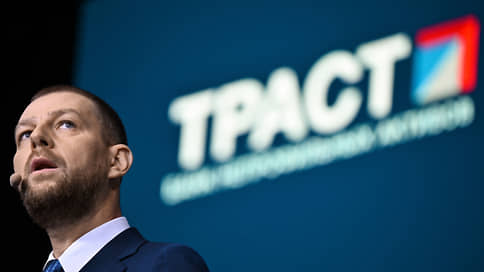Trust completed a five-year strategy with maximum annual profit under RAS
[ad_1]

Trust completed a five-year strategy with a record annual profit under RAS – more than 86 billion rubles. In terms of its volume, the bank entered the top 10 Russian banks. The result was ensured by the sale of large assets, including those purchased from Otkritie FC Bank, at a cost significantly higher than the estimated value. But in the future, experts do not expect excess income from the sale of the property remaining with the Trust.
Trust, a bank of non-core assets owned by the Central Bank, showed the maximum financial result in five years of work within the framework of the strategy until 2023. Net profit at the end of the year according to RAS (before accounting) amounted to almost 86.2 billion rubles. This is the eighth result among all Russian banks.
As the head of the bank, Alexander Sokolov, explained to Kommersant, “there were many large transactions, assets were sold significantly above the estimated value, this forms the profit base.” The number of large profitable transactions included the sale of Tochka JSC (the difference between the estimated value at the beginning of work with the asset and at the time of its sale was 25.1 billion rubles), Baltic Leasing (13.2 billion rubles), as well as “Inga” and “Trans-oil” (19.2 billion rubles). Taking into account the sale of the Kama pulp and paper mill, transactions with assets brought the bank more than 100 billion rubles, but Trust sold the United Carriage Company (UWC) at a loss of about 20 billion rubles.
As Trust clarified, net profit under RAS, taking into account “events after the reporting date,” turned out to be less – 76 billion rubles. However, this result is almost two orders of magnitude better than 2022 (RUB 1 billion). In IFRS (reporting not published), at the end of 2022 and 2023 there was a negative financial result – 105 billion rubles. and 53.3 billion rubles. accordingly, the bank reported. This loss “is due to the methodology for accounting for deposits of the Bank of Russia: interest on deposits is calculated in accordance with IFRS requirements at the market rate.” “According to RAS, the bank shows profit, since deposits are taken into account at the contractual rate,” explained the Trust.
The right of banks to dispose of profits largely depends on their dividend policy. Based on the results of 2019–2020, the Central Bank did not pay dividends, according to the regulator’s annual report. At the same time, Trust is repaying deposits provided by the Banking Sector Consolidation Fund (RUB 1.5 trillion). As of the beginning of 2023, Trust returned Bank of Russia deposits worth 317.1 billion rubles, including 44.3 billion rubles for 2022. (plus interest in the amount of RUB 38.9 billion). Based on the results of five years, about 0.5 trillion rubles were transferred to the Central Bank, Mr. Sokolov specified.
As one of Kommersant’s interlocutors in the financial market notes, the remainder of the profit after payment of dividends remains at the disposal of the credit institution. If profitable, the bank “disposes of it depending on its business plan and development plans.” “For example, it can use funds to strengthen capital or invest in new segments. Then it’s a matter of the budget, that is, salaries, incentive compensation programs, costs of doing business, etc.,” explains Kommersant’s interlocutor.
Trust plans to agree on a new three-year strategy with the Central Bank by the end of March. Preliminarily, during this period, the bank of non-core assets intends to collect more than 70 billion rubles. In 2027, it is planned to liquidate Trust as a legal entity. The pool of assets to be sold by this date includes real estate worth approximately 16 billion rubles, a package of preferred shares in Russneft, obligations under restructured loans and agreements, etc.
As one of Trust’s consultants explained to Kommersant, there are three reasons for record fees over the past five years: the potential for growth in the value of transferred assets, market dynamics and quality of management: “Sometimes the reason for the increase in the selling price was one of the above, sometimes a combination of all three ” Therefore, Trust sold many assets at a price higher than both the initial book value and the starting auction price.
Achieving the projected fees for the sale of the remaining assets will depend on market demand, Kommersant’s interlocutor clarifies, however, “it is unlikely to be possible to earn supermargins as in past years.”
[ad_2]
Source link





